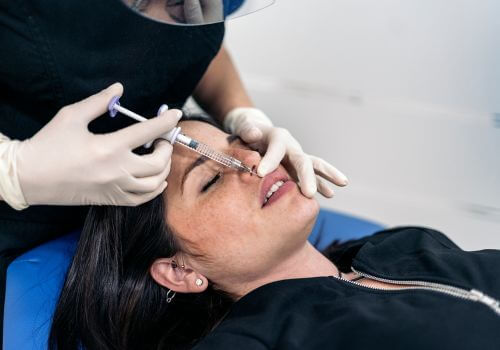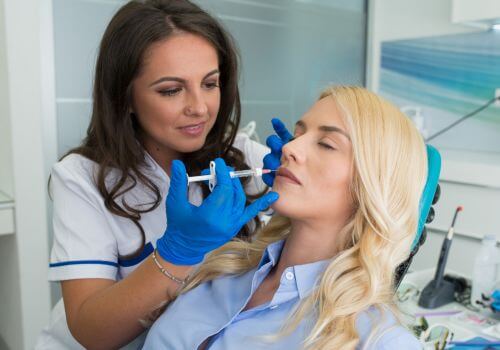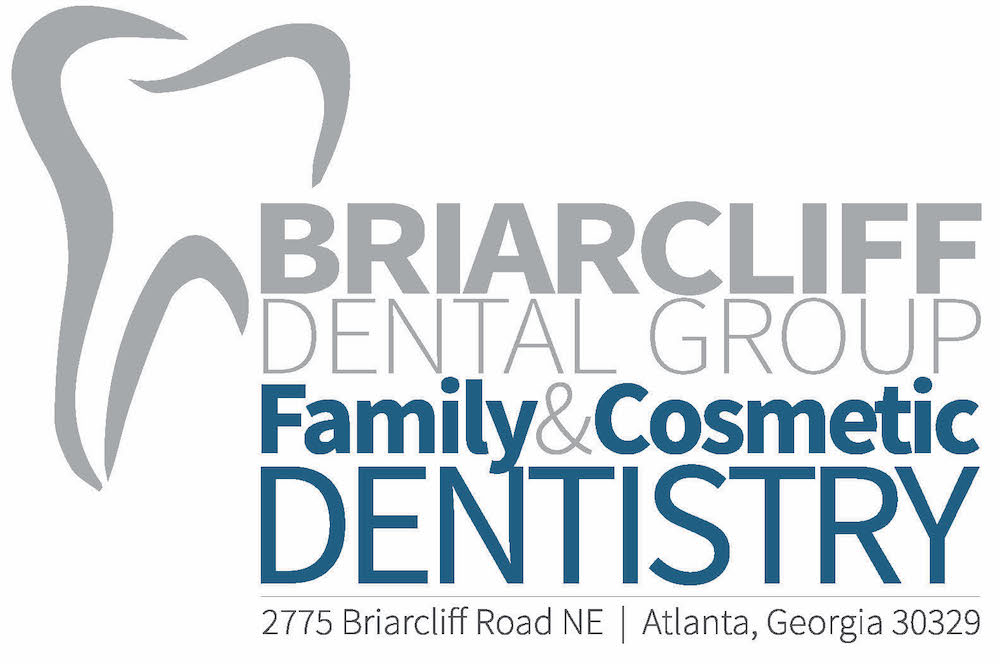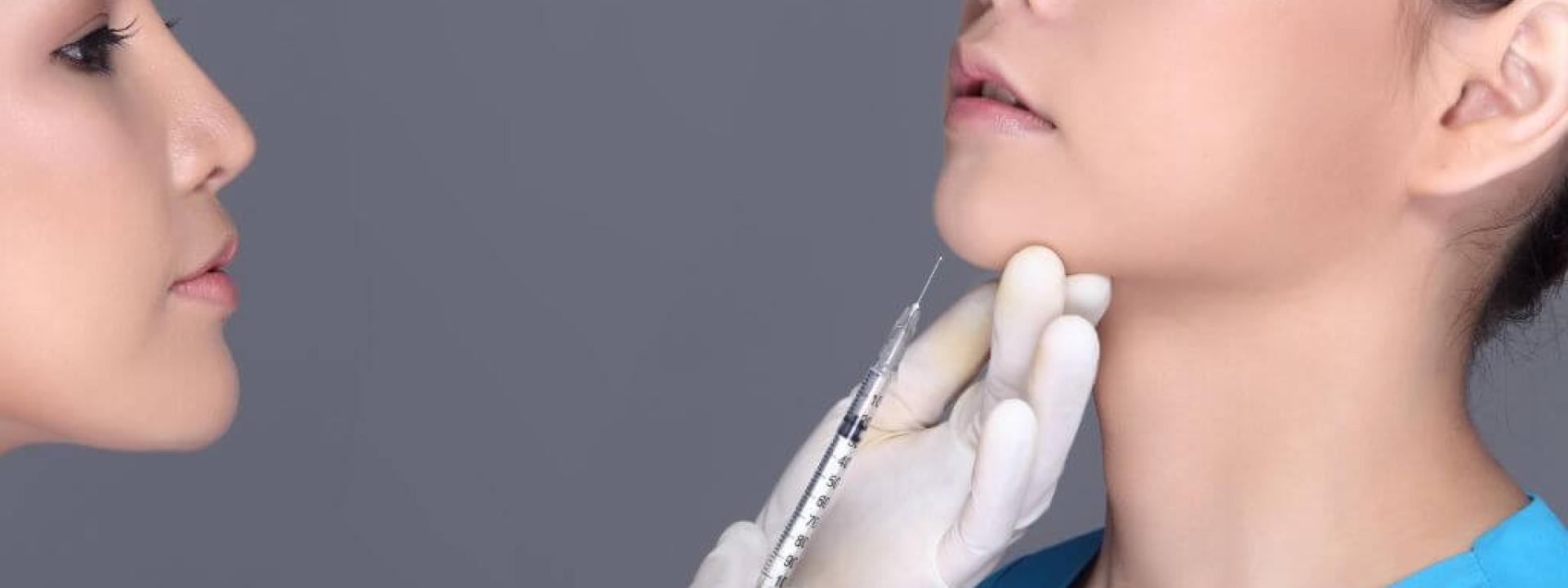Botox may be best known for its anti-aging properties, but it’s also a valuable therapeutic tool for treating certain oral and facial conditions. Derived from Clostridium botulinum, this neurotoxin effectively addresses TMJ dysfunction, headaches, bruxism, and some aesthetic concerns. As dental professionals, we’re here to provide the information you need to help you determine whether this treatment modality is right for you.
The Science Behind the Treatment
Botulinum toxin type A works by temporarily blocking nerve signals that cause muscle contractions. When injected into specific muscles, it creates a controlled, localized paralysis that can last three to six months.
The botulinum toxin attaches to nerve endings and prevents them from releasing acetylcholine, a neurotransmitter that triggers muscle contraction. Following an injection, the process typically takes place gradually over the next several days. Most patients see full effects within two weeks.
Botox Applications in Dentistry
Temporomandibular Joint Disorders
TMJ disorders affect millions, causing pain, limited jaw movement, and decreased quality of life. Injecting Botox into the masseter, temporalis, and pterygoid muscles provides substantial relief for many patients suffering from chronic TMJ pain. Treatment reduces muscle tension and contractions, allowing the joint to function more normally.
Studies have shown that patients who receive Botox for TMJ disorders experience reduced pain levels, greater jaw mobility, and improved overall function. It works particularly well among patients who haven’t responded well to traditional therapies, such as splint therapy or physical therapy.
Bruxism and Teeth Grinding
Bruxism, or chronic teeth clenching and grinding, can cause severe dental damage, including worn enamel, fractured teeth, and facial pain. Injecting Botox into the masseter muscles reduces the intensity of grinding episodes without compromising jaw function for everyday activities like eating and speaking.
Botox therapy helps break the cycle of muscle hyperactivity associated with bruxism, delivering relief from TMJ-associated headaches, jaw pain, and dental wear. As muscle tension decreases, many patients also notice improvements in sleep quality.
Facial Pain and Headaches
Overactive muscles in the head and neck region are a common cause of tension headaches and facial pain. Botox effectively targets these trigger points, providing relief from chronic pain for many patients.
Aesthetic Benefits in Dental Settings
Smile Enhancement

Botox is also effective in addressing aesthetic concerns in the lip area. Gummy smile correction, for example, involves injecting small amounts of Botox into the muscles that lift the upper lip to reduce the amount of visible gum when smiling.
Treatment can also smooth vertical lip lines and reduce lip drooping, helping patients achieve a more youthful appearance. In many instances, dental professionals pair Botox injections with traditional cosmetic dentistry procedures like veneers or teeth whitening.
Facial Asymmetry Correction
Muscle imbalances can lead to facial asymmetry that impacts both function and appearance. By relaxing and balancing facial muscles, Botox can create more symmetrical facial expressions and improve overall facial harmony.
Training and Qualifications
Not every dental professional is qualified to administer Botox injections. Those who wish to offer these services must complete courses covering facial anatomy, injection techniques, patient assessment, and emergency management. Practitioners must also understand proper storage and handling protocols, since Botox is a neurotoxin.
What to Expect
If you are considering Botox, a comprehensive patient evaluation is the first step. During this assessment, your dental team will review your medical history, medications, and any previous experiences with similar treatments. Practitioners must also check for any contraindications, such as pregnancy, breastfeeding, or certain neurological conditions.
Palpating the target muscles to assess their size and tension is another crucial step. This muscle examination helps your dentist determine appropriate injection sites and dosages for optimal results.
Setting Realistic Expectations
Your dentist will explain the gradual onset of effects, how long the results usually last, and the potential need for repeat sessions. They’ll also address any questions or concerns you may have before treatment.
Common Side Effects
When administered properly, Botox injections are generally safe, and most patients experience minimal side effects. Common reactions include temporary bruising at injection sites, mild swelling, or headache. These effects resolve within a few days and are less common with a proper injection technique and post-treatment care.
Some patients experience temporary weakness in nearby muscles, which usually resolves as the effects of the Botox wear off. Precise injection placement and appropriate dosing reduce the risk of this potential complication, proving the importance of choosing a skilled practitioner.
Contraindications and Precautions
Patients with certain conditions should avoid Botox treatment. This includes those with active infections at injection sites, specific neurological disorders and women who are pregnant or nursing. Inform your dentist if you are on blood thinners, as they increase the risk of bruising.
Complementary Treatment Therapies
Botox is most effective when used as part of a comprehensive treatment plan rather than as a standalone solution. For TMJ disorders, combining Botox with splint therapy, physical therapy, or stress management techniques provides superior results compared to any single treatment modality.
Patients with bruxism often benefit from combining Botox treatments with custom night guards to protect teeth from residual grinding forces. This integrated approach addresses both the muscle hyperactivity and its consequences.
Timing with Other Procedures
Coordinating Botox treatments with other dental procedures requires careful planning. Treatment should generally precede restorative work that could be affected by changes in muscle function. For example, treating bruxism with Botox before placing restorations can prevent damage to the new dental work.
Closing Thoughts

Botox injections are a significant advancement in dental therapeutics, offering effective treatment options for various conditions affecting the oral and facial regions. When properly administered by trained professionals, it provides safe, effective relief for patients suffering from TMJ disorders, bruxism, and various other conditions while delivering aesthetic benefits.
As Botox becomes more common in dental practices, it reflects the profession’s commitment to treating the whole person, not just their teeth. Schedule an appointment today to find out whether Botox could help you achieve a healthier smile and an improved quality of life.
If you’re in Atlanta, GA, and need dental care you can trust, give us a call at (252) 651-4419 or email [email protected]. We’re here to help you smile with confidence!

